We test the year’s best XC, trail, enduro, and full-face mountain bike helmets from popular brands like Fox, Troy Lee Designs, POC, Giro, Smith, and more

Author: Erik Nilson / Last Updated: January 1, 2024
Cascade Gear Reviews is rider-supported and uses affiliate links. Learn more about us.
Whether you’re a beginner rider just starting out or an expert shredder hitting 30-foot doubles, a quality mountain bike helmet is a must-have item for staying safe on the trail. With more than 20 years of mountain biking experience, our expertise is impossible to match, and we regularly test the best mountain bike helmets out on the trail. Read on to learn more about the best mountain bike helmets of 2024.
The Best Mountain Bike Helmets
- Best Overall MTB Helmet: Fox Speedframe Pro
- Another Top MTB Helmet: Troy Lee Designs A3
- Best MTB under $100: Smith Convoy
- Best MTB Helmet for Enduro: Fox Dropframe Pro
- Best Full-face MTB Helmet: Smith Mainline
- Best XC (cross country) MTB Helmet: POC Octal MIPS
How We Choose the Best Mountain Bike Helmets
We’ve ridden well over 20,000 miles (and counting) in various mountain bike helmets over the past 20 years. In addition to our vast experience, we take into account things like comfort, safety and protection, features, and price when ranking our top helmets.
> Not sure where to start? Check out our comprehensive MTB helmet buying guide below.
> Need to complete your kit? See our guide to the year’s best MTB shoes.
MTB Helmet Comparison Table
Product | ||||||
Image | ||||||
Price | $180 | $220 | $85 | $219 | $310 | $200 |
Best Use | Trail, Enduro | Trail, Enduro | Trail, XC | Enduro | Enduro, DH | XC |
Helmet Shape | Intermediate Oval | Round Oval | Intermediate Oval | Round Oval | Intermediate Oval | Intermediate Oval |
Construction | In-mold | In-mold | In-mold | In-mold | In-mold | In-mold |
Virginia Tech Rating | N/A | |||||
Impact Protection System | MIPS | MIPS | MIPS | MIPS | MIPS | MIPS |
Vents | 19 | 16 | 20 | 15 | 21 | 21 |
Visor | Yes | Yes | Yes | Yes | Yes | No |
Weight | 13.4 oz. | 13.9 oz. | 11 oz. | 16.2 oz. | 27 oz. | 9.5 oz. |
Pros | - Great combination of comfort, fit, and price. | - Premium build quality and very comfortable. | - Very comfortable and looks good. | - Lightweight and well ventilated considering the amount of coverage. | - Ideal combo of protection, comfort, and weight. | - One of the most comfortable and coolest lids we've ever used. |
Cons | - Slightly narrow fit doesn't work well with very round heads. | - Not as cool as other options. - A bit on the pricey side. | - Lacks a number of more premium features. | - Polarizing looks. | - Runs hot for long uphill slogs. | - Offers less coverage and protection than most other models. |
Shop Helmets |
Best Overall Mountain Bike Helmet
Fox Speedframe Pro Helmet
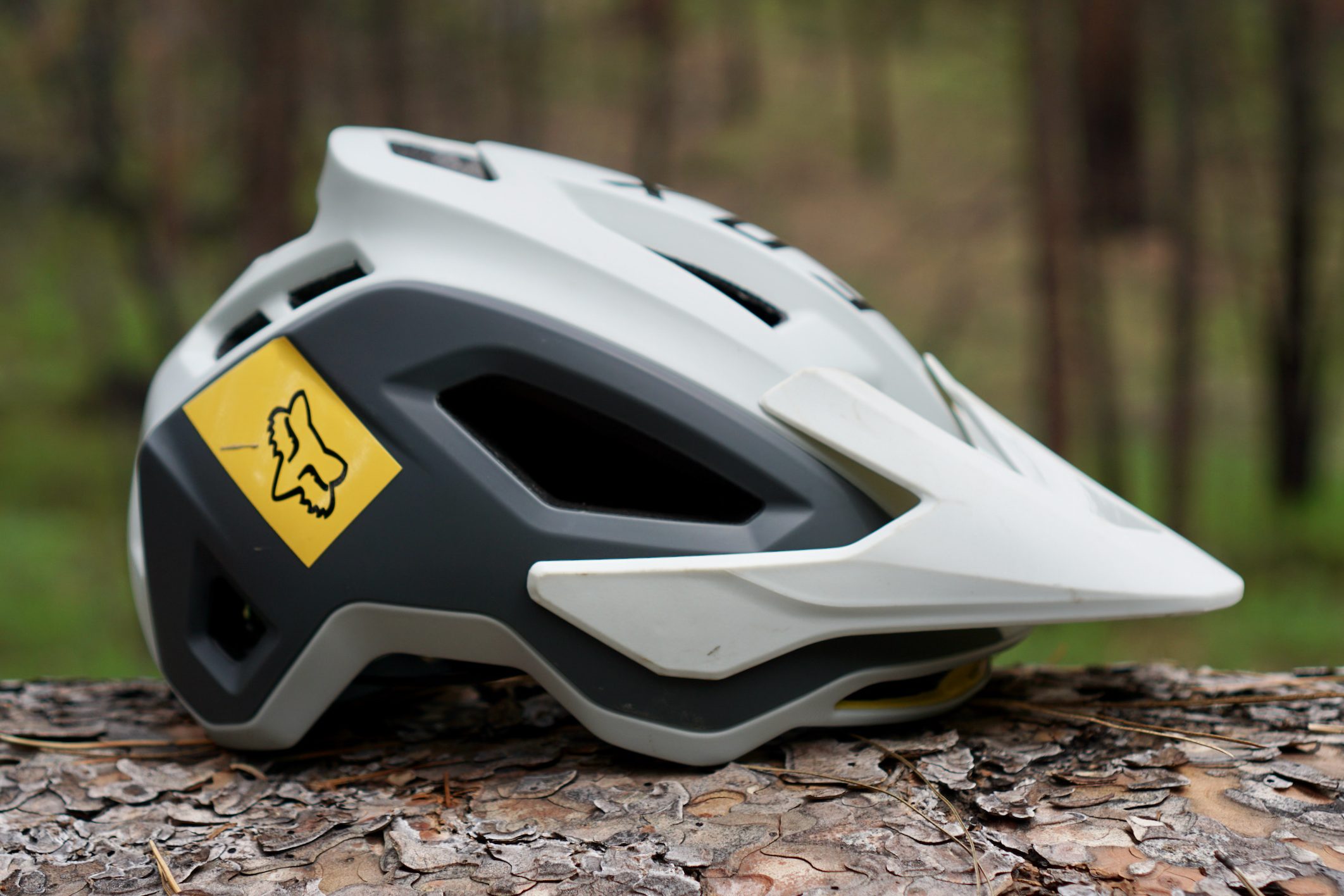
Price: $189.95 MSRP
Best Use: Trail, Enduro
Virginia Tech Rating: 5 Stars
Impact Protection System: MIPS
Helmet Shape: Intermediate Oval
Weight: 13.4 ounces, 380 grams
Crash Replacement: 30% discount
Pros:
– Great combination of comfort, fit, and features at a reasonable price.
– Above average ventilation.
Cons:
– Slightly narrow fit might not work well for those with round heads.
Why it’s Great
After a full season of testing helmets out on the trail, the Fox Speedframe Pro is the best overall mountain bike helmet we’ve ever used.
The Fox includes everything we look for in a top-rated mountain bike helmet. You get a MIPS liner that helps reduce rotational forces during a crash and the helmet is exceptionally comfortable thanks to the 360-fit system that cinches down around your entire head (not just the back like most others). The Speedframe Pro also includes premium features like a magnetic Fidlock buckle and an adjustable visor, and the vents located just above the brow do an excellent job of flowing air and minimizing excessive sweat buildup in hot temps. Finally, the Fox lid simply looks good out on the trail and comes in a plethora of color combinations.
Even after riding thousands of miles in dozens of different lids, the Fox Speedframe Pro remains our top recommended helmet for the year.


How it Compares
The closest competitor to the Fox Speedframe Pro is the Troy Lee Designs A3 (listed below). Both helmets are phenomenal in their own right, but each has its differences.
If you value airflow, cooler head temps, and less sweat above all else, then the Speedframe Pro is the easy choice–the three intake vents right under the visor work so darn well. However, if a slight bump in overall coverage is more important, then the Troy Lee Designs A3 might be the better option. The rear and sides of the TLD A3 helmet extend slightly farther down when compared to the Speedframe Pro, which in turn feels like it offers a bit more protection. One final deciding factor between these two helmets might well come down to price, with the Fox undercutting the Troy Lee Designs by about $40. All things considered, you really can’t go wrong with either lid!
Shop the Fox Speedframe Pro at:
Wanna know more?
Read our In-Depth Review of the Fox Speedframe Pro.
Another Top Mountain Bike Helmet
Troy Lee Designs A3 Helmet

Price: $249.99 MSRP
Best Use: Trail, Enduro
Virginia Tech Rating: 5 Stars
Impact Protection System: MIPS
Helmet Shape: Round Oval
Weight: 13.9 ounces, 394 grams
Crash Replacement: 30% discount
Pros:
– Premium build quality with a very comfortable fit.
– Extra liner is included in the box.
Cons:
– A bit on the pricey side.
– Not the most breathable option.
Why it’s Great
If past performance is an indicator of future success, then it should come as no surprise that the Troy Lee Designs A3 is a real standout helmet. Having logged thousands of miles in the previous generation A1 and A2 models, we can unequivocally say that the A3 is the best version yet.
Slipping on the TLD A3 helmet feels like coming home; its cinch system features 54 clicks of adjustment (yes, we counted) for dialing in the perfect fit and the padding offers a perfect balance of comfort while still retaining a low profile. The combination of EPP and EPS foam provides excellent slow- and high-speed impact protection, and the MIPS safety system helps reduce rotational forces during a crash. Other noteworthy features include a magnetic Fidlock buckle, an adjustable visor, and a piece of EVA foam located just above the brow that helps keep sweat from dripping down your head and getting in your eyes. If you can swallow the $250 price tag, the Troy Lee Designs A3 is a standout choice.

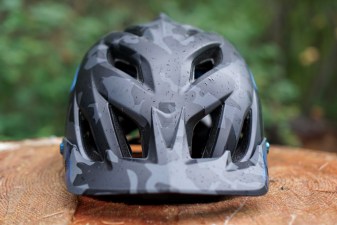
How it Compares
With its full-coverage style, the Troy Lee Designs A3 is a solid helmet for trail and enduro bike duties. In this same genre, you’ll find the Fox Speedframe Pro (listed above) and POC’s Kortal Race MIPS (listed below).
For hot climates and all-day pedals, we recommend the slightly breezier Speedframe Pro–its ventilation system is one of the best we’ve ridden in. And while the TLD A3 offers a good amount of coverage, the Kortal Race MIPS takes it one step further with its slightly deeper fit and extended temple and rear protection sections, making it the better choice for gnarlier trails. The POC also features some cool built-in tech, like the ability to electronically store emergency medical and contact information, which certainly sets it apart from the TLD A3. In the end, we highly recommend all three helmets, but each has its subtle nuances and is tailored to a slightly different rider.
Shop the Troy Lee Designs A3 at:
Wanna know more?
Read our In-Depth Review of the Troy Lee Designs A3.
Best Mountain Bike Helmet Under $100
Smith Convoy Helmet

Price: $85 MSRP
Best Use: Trail, XC
Virginia Tech Rating: N/A
Impact Protection System: MIPS
Helmet Shape: Intermediate Oval
Weight: 11 ounces, 312 grams
Crash Replacement: 30% discount
Pros:
– Comfortable fit and really good looks.
– Very light and breathable.
Cons:
– Visor is not adjustable.
– Chin strap routing isn’t the best.
Why it’s Great
If you’re looking for the best mountain bike helmet under $100, it’s really hard to beat the $85 Smith Convoy. For less than half the price of premium offerings, Smith manages to produce a stellar lid.
For starters, the ever-valuable MIPS liner helps reduce rotational forces on your brain during a crash. And the 20 vents do a great job of keeping your head cool as the temperature, or tempo, rises. The Convoy is also special in that it comes in a full range of sizes from XS to XL, ensuring a proper fit (many budget helmets only offer one or two sizes). Finally, the Smith has a quality feel to it and the assortment of colors just looks good. For recreational riders, or those who don’t demand all the features found on premium models, it doesn’t get any better than the Smith Convoy.


How it Compares
There’s never been a better time to be a value-driven mountain bike helmet shopper; there are just so many quality budget lids on the market at the moment. Most similar to the Smith Convoy is Trek’s Solstice MIPS (listed below). As the name suggests, both helmets include a MIPS liner for added protection, and each come in a number of good-looking colors.
That said, the Convoy wins us over with its more comfortable fit, lower weight, and higher quality build. Perhaps most importantly, however, the Smith is offered in five sizes ranging from X-Small to X-Large, whereas the Trek only comes in two (S/M and L/XL). Finally, we think the Smith feels less clunky on the trail and is the better looking helmet in general. The Trek does undercut the Smith by about $15, but we think the Convoy is the smarter choice for the reasons listed above.
Shop the Smith Convoy at:
Best Mountain Bike Helmet for Enduro Riding
Fox Dropframe Pro Helmet
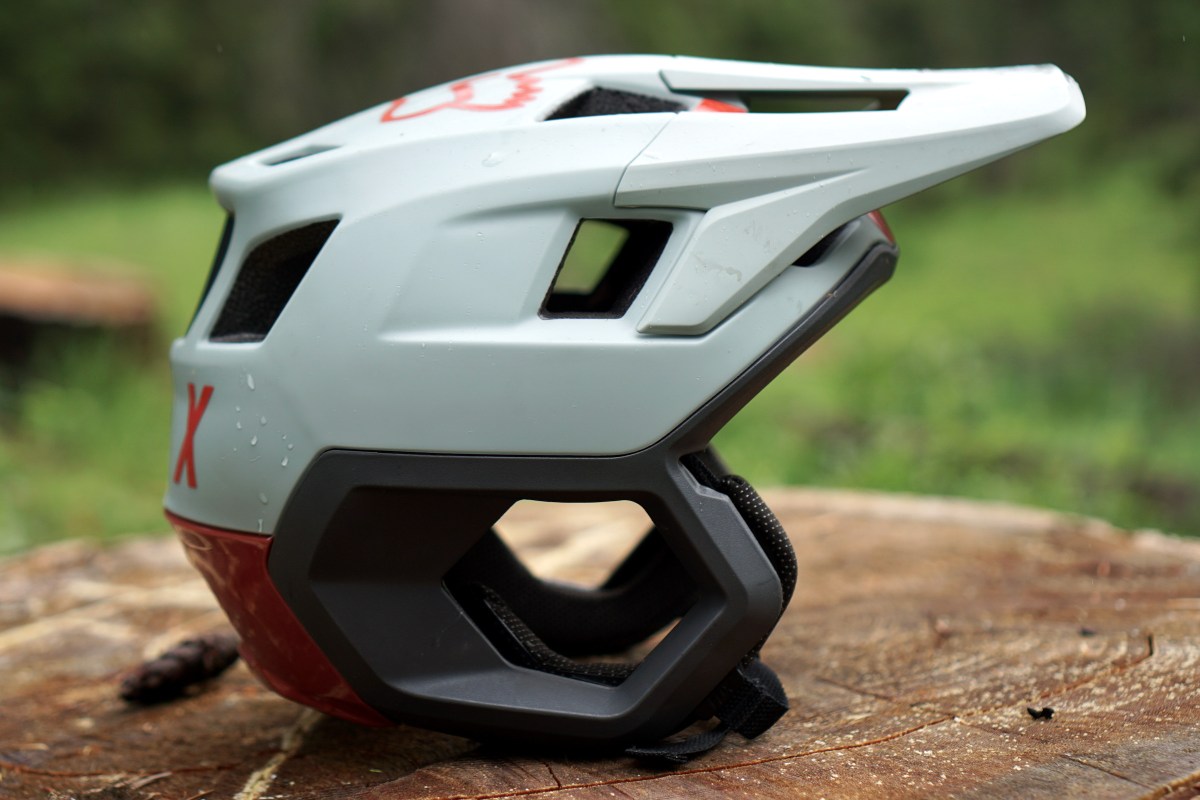
Price: $224.95 MSRP
Best Use: Enduro, Aggressive Trail
Virginia Tech Rating: 5 Stars
Impact Protection System: MIPS
Helmet Shape: Round Oval
Weight: 16.2 ounces, 462 grams
Crash Replacement: 30% discount
Pros:
– Added coverage and protection over a half-shell helmet.
– Surprisingly lightweight and well-ventilated.
Cons:
– Polarizing looks and runs warmer than a traditional half-shell helmet.
Why it’s Great
Part full-face, part half-shell, Fox’s Dropframe Pro is one polarizing mountain bike helmet. But if you can get past the funny looks–although its unique design has really grown on us–then it’s easy to see why this lid is the best mountain bike helmet for enduro riding.
It’s all about added coverage and safety with the Dropframe Pro, which is backed up by it being rated one of the safest mountain bike helmets by Virginia Tech’s independent research lab. The Fox features a MIPS liner to reduce rotational forces and extended coverage around the ears, temple, jaw, and back of the head. Plus, the dual-density Varizord EPS foam claims to spread out impact forces across a wider area.
We also found the Dropframe Pro to run pretty darn cool despite the extra coverage, and remains comfortable to about 70 degrees Fahrenheit. Other things we like about the Fox are the large ear holes that retain excellent hearing and overall awareness (unlike a full-face), a comfy and custom fit thanks to different size pads that are included in the box, and interference-free goggle and glasses integration. If your looking for the best mountain bike helmet for enduro riding then the it’s hard to beat the Fox Dropframe Pro.
Of note, the Dropframe Pro has some wonky sizing so make sure to refer to the size chart before buying, we ordered one size larger than normal.

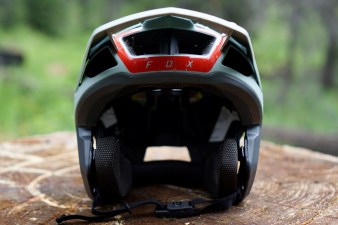
How it Compares
The Fox Dropframe Pro fills a pretty specific niche in the world of mountain bike helmets, but it doesn’t stand alone. Giro’s Tyrant Spherical is a worthy alternative to the Fox, but it can’t quite compete in our opinion. To get to the point, we found the Fox to be considerably more comfortable across the board.
Overall, the Dropframe Pro offers a more secure fit (thanks to different size pads that come in the box), and the Fox (16 ounces) is noticeably lighter on the trail compared to the Tyrant Spherical (24 ounces). Finally, the Dropframe Pro does a much better job of letting air flow through the helmet and keeps our head much cooler during warmer outings. All these things add up in the Fox’s favor and make it our preferred choice for extra aggressive riding and gnarly trails.
Shop the Fox Dropframe Pro at:
Wanna know more?
Read our In-Depth Review of the Fox Dropframe Pro.
Best Full-face Mountain Bike Helmet
Smith Mainline MIPS Helmet

Price: $310 MSRP
Best Use: Enduro, Downhill
Virginia Tech Rating: N/A
Impact Protection System: MIPS
Helmet Shape: Intermediate Oval
Weight: 27 ounces, 765 grams
Crash Replacement: 30% discount
Pros:
– Perfect combination of protection, comfort, and low weight.
– Premium build quality.
Cons:
– Hot on long uphill pedals, but this is true of any full-face helmet.
Why it’s Great
Not too heavy and not too light, but just right; the Smith Mainline MIPS manages a great blend of downhill-worthy protection and confidence with enduro-worthy low weight and breathability, making it the best all-around full-face mountain bike helmet at the moment. Pulling the Mainline MIPS out of the box we immediately noticed three things: a premium feel that is a cut above the rest, a surprisingly low weight, and an unexpected stoutness to it all. All said, it’s a unique and impressive combination.
As you’d expect from a premium lid that costs just over $300, the Smith Mainline MIPS is loaded with features. You’ll find a number of different pad sizes for dialing in a perfect fit, the D-ring buckle is stout and provides a locked-in feel, and the chin strap is surprisingly soft and comfortable (enough so that it’s worth mentioning here). And while it’s certainly not as cool as a half-shell model, the 21 vents do a good job of letting air flow, allowing the helmet to remain comfortable even as the mercury rises. Finally, the Smith passes testing for both downhill and e-bike use, making it a great option for all types of aggressive riding.


How it Compares
For something that’s a bit more pedal friendly than the Mainline MIPS, the Troy Lee Designs Stage is an excellent choice. The Stage undercuts the Mainline MIPS by about 3 ounces and offers better ventilation overall, making it the preferred option for those who are more likely to earn their turns and typically pedal to the top of the hill. That said, the Stage doesn’t feel nearly as robust as the Mainline MIPS and isn’t our first choice for shuttle or lift-served days.
Situated at the other end of the lightweight full-face helmet spectrum is the slightly heavier Fox Proframe RS (29 ounces). While the Fox is a popular choice, we don’t find the fit and finish to be on the same level as the Smith, and it certainly doesn’t feel as streamlined. For the best all-around performance, it’s hard to find a fault the Smith Mainline MIPS.
Shop the Smith Mainline MIPS at:
Wanna know more?
Read our In-Depth Review of the Smith Mainline MIPS.
Best XC (cross-country) Mountain Bike Helmet
POC Octal MIPS Helmet
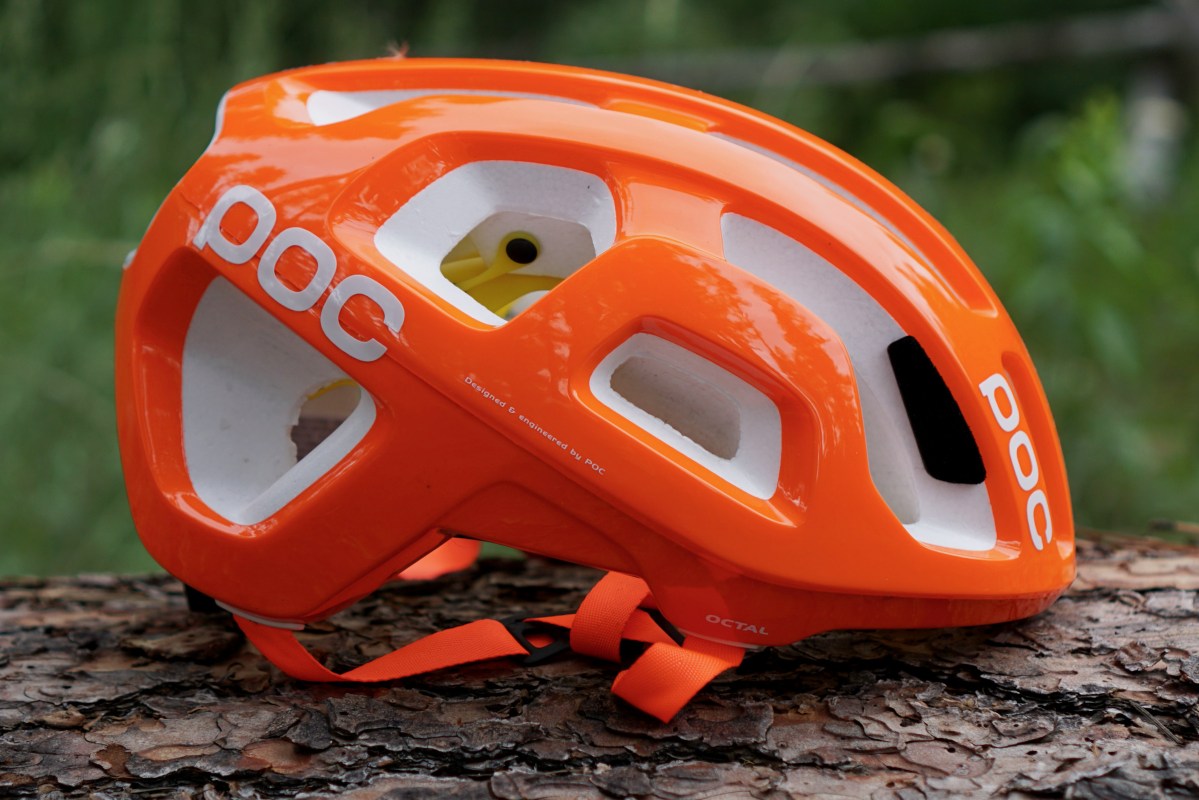
Price: $200 MSRP
Best Use: XC
Virginia Tech Rating: 5 Stars
Impact Protection System: MIPS
Helmet Shape: Intermediate Oval
Weight: 9.5 ounces, 270 grams
Crash Replacement: N/A
Pros:
– One of the most comfortable helmets on the list.
– Exceptionally lightweight and airy.
Cons:
– Less coverage than most other helmets.
– No visor.
Why it’s Great
For the best XC mountain bike helmet on the market, we wholeheartedly recommend the POC Octal MIPS. Weighing in at a scant 9.5 ounces, the POC easily undercuts all other helmets on this list. Combine that low weight with the helmet’s exceptional airflow–the Octal MIPS features 21 massive vents–and you have yourself the perfect cross-country companion.
As soon as we slipped on the Octal MIPS, we knew it would be a winner. The helmet comfortably cradles your head in a way that other lids don’t, its minimalist padding is surprisingly comfortable, and even the chin strap is extremely supple and soft. In short, the helmet simply disappears on your head. If gruelling climbs, all-day epic rides, and XC racing are what you love, then the POC Octal MIPS is for you. As an added bonus, the POC also excels as a gravel and road riding helmet.


How it Compares
The POC Octal MIPS is certainly a standout in terms of low weight and ventilation. However, if the $200 price is a bit much then the $85 Smith Convoy (listed above) is a solid second choice. Don’t let the low price of the Smith fool you. Just like the POC, the Smith Convoy features a MIPS liner, is pretty darn light at 10 ounces with the visor removed, and it simply looks good. That said, the Octal MIPS has the edge in fit and feel as well as airflow, making it the better choice for hour-long sufferfests and all-day rides in hot temps where minimal weight and maximum airflow reign supreme.
Shop the POC Octal MIPS at:
More Top Mountain Bike Helmets
Giro Radix MIPS Helmet

Price: $100 MSRP
Best Use: Trail, XC
Virginia Tech Rating: N/A
Impact Protection System: MIPS
Helmet Shape: Intermediate Oval
Weight: 11.1 ounces, 315 grams
Crash Replacement: 30% discount
Pros:
– Reasonable price and a nice set of features.
– Versatile design works well across a number of cycling disciplines.
Cons:
– Small visor isn’t very functional.
Why it’s Great
Founded in 1985, Giro has a long-standing history of making quality mountain bike helmets. In fact, some of our most fond riding memories are while wearing the original Xen model, circa the early 2000s. Fast forward a few decades and the Radix MIPS is an excellent example of what makes a Giro helmet a Giro helmet. Comfortable, lightweight, good-looking, and reasonably priced is the best way to describe the Radix MIPS. The trail- and cross country-oriented lid features a MIPS liner for an added boost in safety and it has minimal yet comfortable padding. Additionally, the 25 vents do a pretty good job of keeping your head cool while working hard.
What we really like about the Giro Radix MIPS, however, is its versatility. Whether we’re cruising around on local singletrack, setting out on a multi-day bikepacking adventure, or simply commuting to work, the understated Giro takes it all in stride. So, while it can’t compete with some of the more expensive options in terms of features–lacking things like a magnetic buckle and extended coverage–it’s a solid multipurpose mountain bike helmet with a very reasonable $100 price tag.


How it Compares
The Giro Radix is a quality lid with an affordable price tag aimed at trail bike and cross-country riders. Along those same lines you have Smith’s Convoy helmet (listed above). Both lids are relatively light and well ventilated, feature a MIPS liner, and are offered in a variety of colors. However, with its adjustable visor and superior strap routing in the rear, the Giro is better equipped. That said, if you’re on a budget and the lack of those aforementioned features isn’t a concern, then the $15 savings of the Smith Convoy is worth considering.
Shop the Giro Radix MIPS at:
POC Kortal Race MIPS Helmet

Price: $250 MSRP
Best Use: Trail, Enduro
Virginia Tech Rating: N/A
Impact Protection System: MIPS
Helmet Shape: Long Oval
Weight: 14.1 ounces, 400 grams
Crash Replacement: N/A
Pros:
– Deep fit provides a ton of coverage.
– Cool set of tech features.
– E-bike rated.
Cons:
– Expensive with a narrow fit.
– Interferes with riding glasses.
Why it’s Great
One of the most protective half-shell mountain bike helmets on the list, the POC Kortal Race MIPS is all about coverage and keeping your noggin safe. At the heart of the POC you’ll find a MIPS Integra liner, extended rear and side coverage, and a visor that’s meant to easily break away during a crash (which may help reduce neck injuries). It’s also one of the few models that meets the Dutch NTA 8776 e-bike helmet standard, making it a great option for those who ride electric mountain bikes.
Other standout features include a RECCO reflector for search and rescue location-detection purposes and near field communication (NFC) functionality for storing emergency medical and contact information (which is accessed through a mobile device). All told, the POC Kortal Race MIPS is one of the most feature-packed helmets out there at the moment, which helps justify its eye-watering $250 price tag.


How it Compares
The closest competitor of the POC Kortal Race MIPS is the Troy Lee Designs A3 (listed above). Both helmets are aimed at squarely at aggressive trail and enduro riding and provide a ton of coverage (for half-shell models that is). However, the TLD A3 is more comfortable (we experienced pressure on the sides of our head with the POC), integrates better with a wide variety of riding glasses (the POC’s extended temple area pushes most glasses down), and is about $40 less. Nine times out of ten we’d recommend the Troy Lee Designs A3. That said, if you have an oval-shaped head and the POC’s tech features temp you, then the Kortal Race MIPS is still a darn fine choice.
Shop the POC Kortal Race MIPS at:
Trek Solstice MIPS Helmet

Price: $69.99 MSRP
Best Use: Trail, XC
Virginia Tech Rating: 5 Stars
Impact Protection System: MIPS
Helmet Shape: Intermediate Oval
Weight: 11.8 ounces, 335 grams
Crash Replacement: Free replacement
Pros:
– Casual looks, variety of color options, and low price.
– Excellent crash replacement policy.
Cons:
– Doesn’t provide much coverage.
– Non-adjustable and flimsy visor.
Why it’s Great
Trek’s recently updated Solstice MIPS is a versatile lid with a very reasonable price tag, making it a nice budget mountain bike helmet option for recreational riders. As with most wallet-friendly lids, you do forgo a few premium features like an adjustable visor, magnetic Fidlock buckle, and extended coverage, but the Trek has a few tricks up its sleeve.
Noteworthy features include a MIPS liner that claims to help reduce brain injuries during a crash and reflective accents for increased visibility at night. Additionally, instead of a one-size-fits-none approach like most true budget helmets, the Solstice MIPS comes in S/M and M/L sizes and covers head sizes ranging from 51 to 61 centimeters. Finally, the low 11.8-ounce weight and multitude of color options mean you’ll remain comfy on long rides and look good doing it. For someone just getting started in the sport or those on a budget, the Trek Solstice MIPS makes a lot of sense.


How it Compares
Inexpensive mountain bike helmets may not get the same level of attention as their premium counterparts, but there’s a lot to be said for a quality product at a reasonable price. Sharing that same accolade is the Smith Convoy (listed above). Both models come in well under $100, feature a MIPS safety liner, and are available in a multitude of colors. That said, we prefer the Smith Convoy for its larger range of sizes, increased coverage, superior fit and finish, and subjectively better looks. However, the Trek does offer a better crash replacement policy (free replacement for one year versus the Smith’s 30% off MSRP) and is more casual in appearance, which may be a selling point for some.
Shop the Trek Solstice MIPS at:
Giro Manifest Spherical Helmet
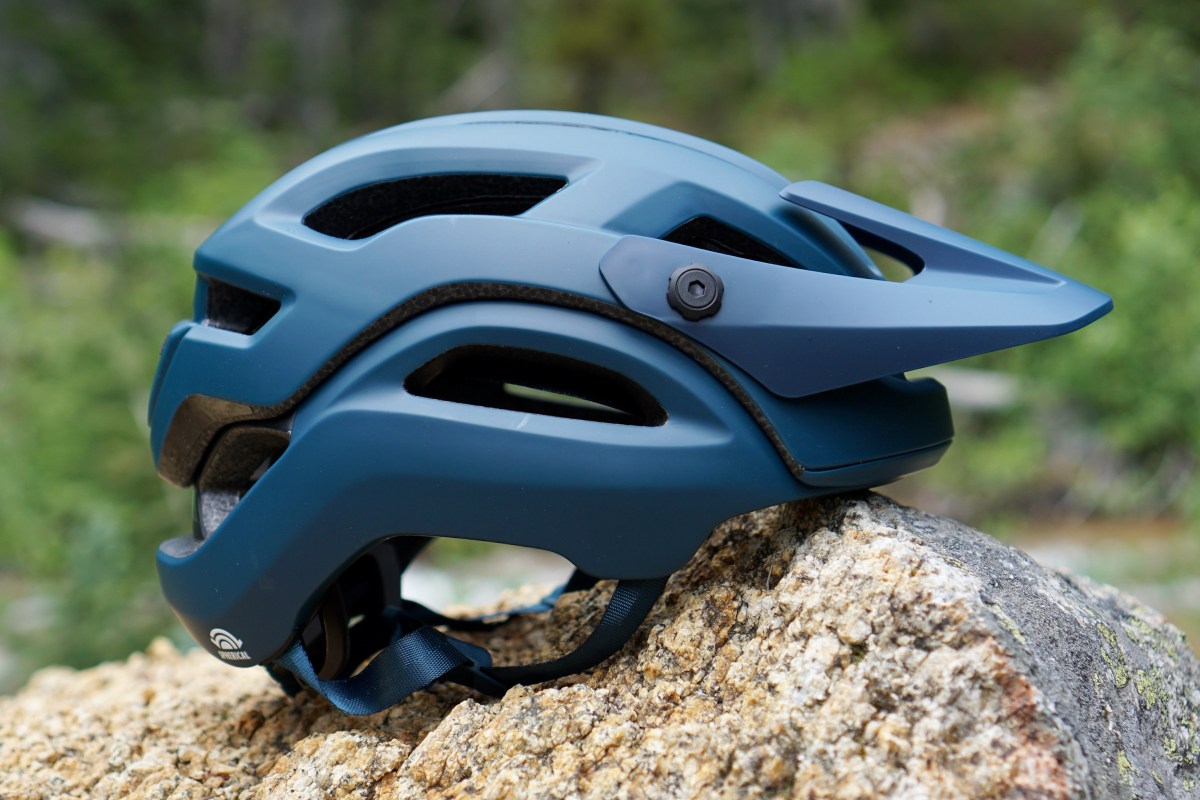
Price: $260 MSRP
Best Use: Trail, Enduro
Virginia Tech Rating: 5 Stars
Impact Protection System: MIPS
Helmet Shape: Intermediate Oval
Weight: 12 ounces, 340 grams
Crash Replacement: 30% discount
Pros:
– Innovative two-piece design and comfortable fit.
– Dedicated spot for storing glasses.
– Well ventilated.
Cons:
– Very expensive and looks a bit clunky.
Why it’s Great
Don’t let the Giro’s position on the list fool you, the Manifest Spherical is one sweet mountain bike helmet with some awesome features. The talking point of the Giro is how it implements the MIPS safety liner; essentially, there are inner and outer pieces that are separated by a slip plane, allowing for the two layers to rotate on one another. Besides the benefit of reducing rotational forces during a crash, this implementation of MIPS rids the helmet of the traditional plastic liner and makes for a streamlined fit and feel.
As for the rest of the helmet, you’ll find premium features like a magnetic Fidlock buckle, an adjustable visor, and excellent sunglass and goggle compatibility (there’s even little grippers that do a good job of holding them in place). And finally, the Manifest Spherical’s unique construction offers above-average ventilation, making it a great choice for hot-weather mountain bike rides.


How it Compares
Priced at about $260, the Giro Manifest Spherical is the most expensive half-shell model on our list, but that doesn’t necessarily make it our favorite. In fact, we prefer less-expensive options like the Fox Speedframe Pro (listed above), Troy Lee Designs A3, and POC Kortal Race MIPS over the Giro. All three alternatives do a better job of routing straps around the ears, feel less clunky, or have a nicer fit and finish.
For about $80 less than the Giro, the Fox Speedframe Pro feels considerably more streamlined on our heads. It also comes with an extra set of liner pads to swap in once the originals get too nasty. We prefer the Troy Lee Designs A3 (listed above) over the Giro due to its more comfortable fit, better styling, and included accessories like extra liner pads and a carrying bag–all for $60 less. Finally, the POC Kortal Race MIPS is only about $10 less than the Giro but offers more coverage, is just as well ventilated, and features cool tech like a RECCO detector and the ability to electronically store emergency medical information. In the end, there isn’t a compelling reason to opt for the Giro over the others.
Shop the Giro Manifest Spherical at:
Other Popular Mountain Bike Helmets
We’ve used dozens of mountain bike helmets over the past 20 years. Below are some of the more popular models that didn’t make it into our top picks, and why. Listed alphabetically.
Giro Switchblade
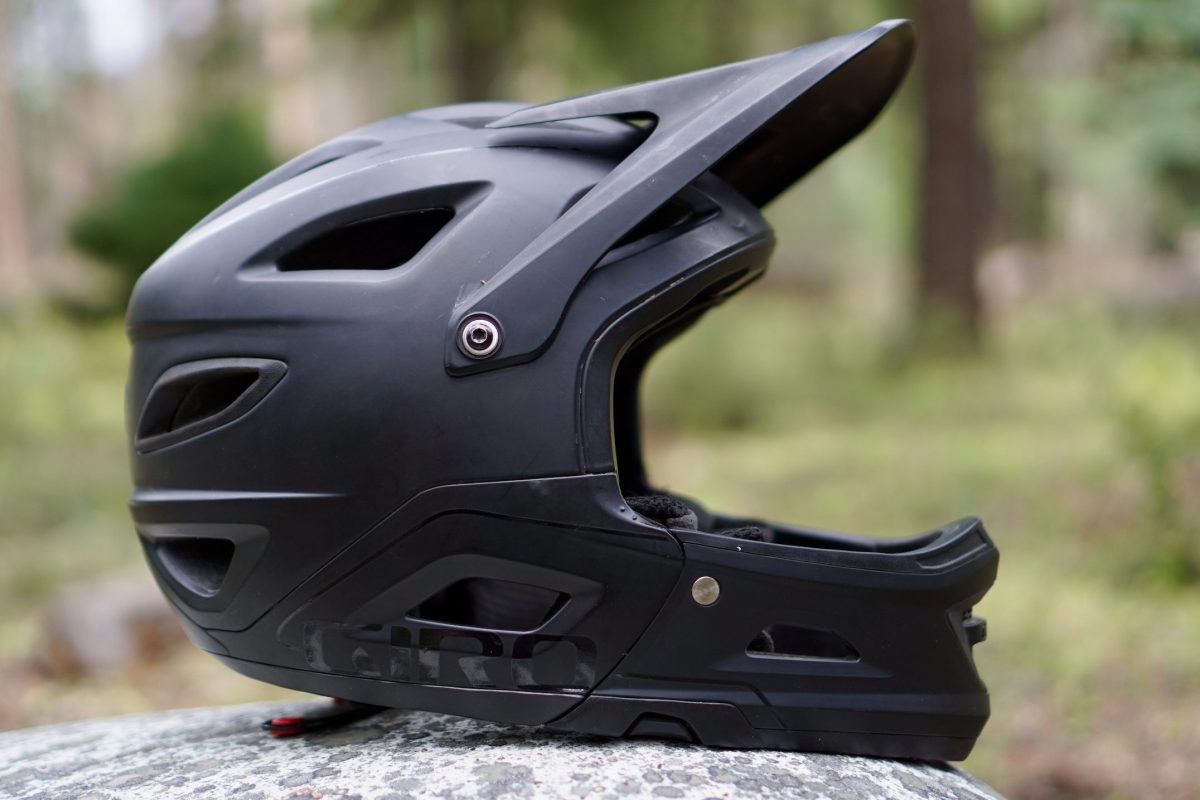
Price: $280 MSRP
Best Use: Enduro
Virginia Tech Rating: N/A
Impact Protection System: MIPS
Helmet Shape: Intermediate Oval
Weight: 2 lbs. 2.4 oz., 975 grams
Crash Replacement: 30% discount
Pros:
– Removable chinbar offers a lot of versatility.
– Time-tested design.
Cons:
– Heavy and hot.
– MIPS liner can be quite loud.
What We Think
Dating back to about 2016, Giro’s Switchblade was one of the first mainstream mountain bike helmets to feature a removable chinbar. It was a popular choice for enduro racers who needed a helmet that remained cool on the transition climbs (with the chinbar removed), yet provided full-face protection for timed downhill stages. The Switchblade, however, is really showing its age and we much prefer the Troy Lee Designs Stage for enduro races. The TLD Stage provides similar levels of protection, is almost a pound lighter, and runs much cooler. Additionally, there’s no fussing with a removable chinbar before dropping in on the trail. That said, the Switchblade fills a specific niche and is still a solid option for riders seeking a helmet with a removable chinbar.
Shop the Giro Switchblade at:
Smith Forefront 2 Helmet

Price: $250 MSRP
Best Use: Trail
Virginia Tech Rating: N/A
Impact Protection System: MIPS
Helmet Shape: Intermediate Oval
Weight: 14 ounces, 380 grams
Crash Replacement: 30% discount
Pros:
– Comfortable and streamline fit.
– Loads of great looking color options.
Cons:
– Runs warm with minimal airflow.
– Really expensive with little to show for it.
What We Think
Light, comfortable, and good looking, Smith’s Forefront 2 is a popular choice among mountain bikers. It features a MIPS liner, adjustable visor, and comes in a ton of great color combinations. It also uses an interesting straw-like feature–called Koroyd–that’s placed in the vents and are said to provide additional protection. However, it runs pretty warm, costs about $250, and doesn’t really bring any standout features to the table. We recommend you look at the Troy Lee Designs A3 instead, which offers better performance at a similar price. That said, the Smith can often be found on sale for around $125 on Amazon, which makes it a very compelling buy.
Shop the Smith Forefront 2 at:
Troy Lee Designs A2 Helmet

Price: $179 MSRP
Best Use: Trail, Enduro
Virginia Tech Rating: 5 Stars
Impact Protection System: MIPS
Helmet Shape: Round Oval
Weight: 13.3 ounces, 377 grams
Crash Replacement: 30% discount
Pros:
– Premium build quality with a very comfortable fit.
– Extra liner is included in the box.
Cons:
– A bit on the pricey side.
– Not the most breathable option.
What We Think
Based on current pricing of the Troy Lee Designs A2–about 60% off at the moment–we’re guessing it’s being discontinued and replaced by the new TLD Flowline series. That said, we’ve logged thousands of miles in various TLD A2’s over the years and still think it’s worth a hard look, especially with some seriously discounted prices. The Troy Lee Designs A2 is comfortable, provides a ton of protection for aggressive riding, and features a MIPS liner. It also carries a 5 star rating from Virginia Tech’s independent helmet research lab. That said, the A2 does run a little warm compared to our top pick, the Fox Speedframe Pro, and it’s not quite as comfortable as the new TLD A3 (listed above). But at a significant discount, the TLD A2 remains a solid choice.
Shop the Troy Lee Designs A2 at:
Mountain Bike Helmet Buying Guide
An expert guide on how to choose a mountain bike helmet
Types of Mountain Bike Helmets
Half-shell: Best for XC (cross-country) and Trail Riding
The most common and widely used mountain bike helmet style, traditional half-shell models are best suited for cross-country, trail and light duty enduro type rides. They offer the least protection of any type but are typically lighter, better ventilated, and the best choice for hot singletrack adventures. The Fox Speedframe Pro is currently our favorite helmet in this category.
Pros:
– Lightweight, breathable and typically the least expensive option.
– Offers the most streamlined fit with “normal” aesthetics.
Cons:
– Don’t provide the same amount of protection as ¾-shell or full-face models.

3/4-shell: Best for Enduro and E-bike Riding
Part half-shell, part full-face, 3/4-shell models are a great choice for aggressive enduro rides or hitting the local dirt jumps. Helmets like the Fox Dropframe Pro have additional coverage around the ears, temple, and back of the head but forgo the chin bar found on full-face models. They run hotter and weigh a bit more than traditional half-shell helmets, but the extra protection gives us peace of mind. However polarizing they may look, these helmets have earned a regular spot in our personal helmet rotation.
Pros:
– Lighter weight and more breathable than full-face helmets.
– Offer more protection than traditional half-shells lids.
Cons:
– Warmer than half-shell helmets (although a plus for cold weather).
– Don’t provide as much protection as a full-face helmet.

Full-face: Best for Aggressive Downhill Riding
Reserved for bike park laps, shuttle days, or downhill racing, full-face models provide the most protection out of all helmet types. These models feature a chin bar to help keep you from smashing your teeth in, thicker padding, and fewer vents, all in the name of added protection and safety. However, all that added coverage does come with a cost. Helmets like the Smith Mainline weigh significantly more, are warmer, and don’t offer the same situational awareness as half-shell options. That said, when things go wrong in a big way, it’s impossible to beat the protection of a full-face mountain bike helmet.
Pros:
– Offers the most protection of any style of mountain bike helmet.
– Inspires the most confidence for gnarly descents.
Cons:
– Heavy, hot, and certainly the most bulky style of mountain bike helmet.
– Often the most expensive type of helmet.

Safety and Protection
Keeping your head protected in a crash is the number one goal of any helmet on the market. That said, some do a much better job than others. For this reason, we highly recommend you choose one from a well-respected brand and zero in on models that include a MIPS liner. Additionally, make sure they pass appropriate helmet tests (like EN and CPSC tests). To take your research one step further, check out Virginia Tech’s helmet lab, which conducts its own tests on many popular models and then rates them.

How Should A Mountain Bike Helmet Fit?
Head Circumference
To properly do its job, a mountain bike helmet must fit correctly, which is why we recommend measuring your head before anything else. To find the circumference, wrap a soft tape measure around the largest part of your head, typically about an inch above your ears and eyebrows. Alternatively, you can use a string and then measure it with a ruler. Once armed with this knowledge, refer to the brand’s size chart to determine the appropriate size.
A mountain bike helmet should fit tight without any pressure points and not bounce around on your head while cruising down the trail. Not only will this provide the highest level of protection, but a properly sized lid will remain comfortable as you rack up the miles.
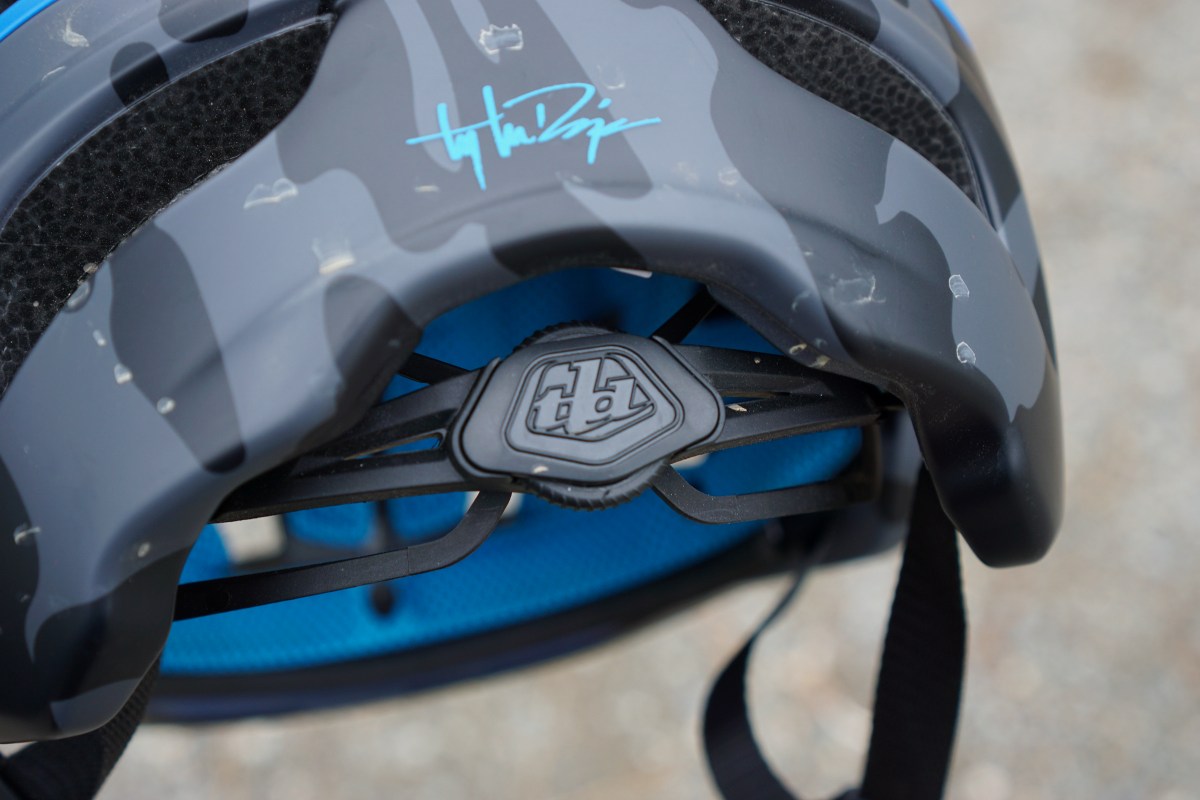
Head Shape
Another important but often overlooked part of proper mountain bike helmet fit is determining the shape of your head. Heads are typically categorized as round oval, intermediate oval, and long oval. To determine which category you fall into, measure from your forehead to the base of your skull and then from ear to ear. If the measurements are even, you have a round head shape. If not, you have an intermediate or long oval shape.
Alternatively, you can simply bend over and have someone take a picture of the top of your head, and then analyze the photo. Unfortunately, manufacturers don’t usually list the shape of the helmet. However, we provide this information in our comparison table above.


Ventilation
Ventilation is instrumental in keeping your head cool and comfortable during long or hot rides. Don’t get too hung up on the number of vents because their overall size and positioning can actually be more important. For instance, the POC Octal MIPS features 21 vents and is the coolest-running mountain bike helmet on our list, considerably more so than the Giro Radix MIPS with its 25 vents. We also really appreciate vents right above the brow for long and hot rides, which is what you’ll find on the Fox Speedframe Pro.

Key Features of Mountain Bike Helmets
MIPS Liner
MIPS, which stands for Multi-directional Impact Protection System, is a technology designed to reduce rotational forces on the brain during a crash, providing an additional layer of safety. This thin plastic slip plane feature is situated between the padded liner and hard foam in most high-quality mountain bike helmets from major manufacturers. While MIPS is not commonly found in lower-priced helmets, you can expect to see this safety technology in helmets priced at around $75 and up.
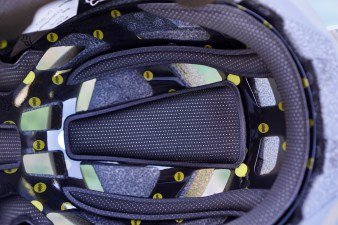

Visor
Visors are a great tool for mountain bikers; they keep the sun out of your eyes, deflect branches from your face, and can guard against debris coming off your buddy’s tire in front of you. We prefer helmets with visors that offer some degree of adjustment, like the Fox Speedframe Pro, which allows you to block a setting sun that’s low on the horizon. It’s also important to take note of the size of the visor—just because a helmet is equipped with one doesn’t mean it’s functional (too small and it won’t block the sun, too long and it will block your line of sight).

Buckle
Buckles come in various types, often associated with different price ranges or helmet styles. The most basic buckle, commonly found on less expensive helmets, is made of plastic and clips together in a traditional style. Another type is the magnetic Fidlock buckle, like that found on the TLD A3, which utilizes magnets to easily clasp and can be operated with one hand. Finally, metal D-ring buckles are often found on downhill helmets and offer the highest level of security. While they may not be as quick or easy to use, they provide the utmost protection.

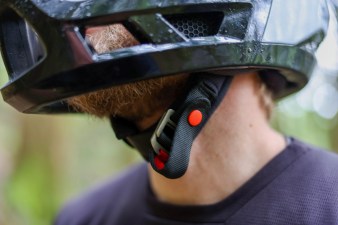
Fit Dial
When choosing a mountain bike helmet, it’s important to look for models with an adjustable rear fit dial. This key feature allows riders to get a custom fit and ensures the helmet stays in place during rough descents, which improves safety and protection. Fortunately, most models from reputable brands include this feature. We’ve been particularly impressed by the dial found on the Troy Lee Designs A3, which offers 54 clicks of micro adjustments which helps the helmet remain comfortable on multi-hour rides.

Goggle and Glasses Storage
If you’re like us and typically store eyewear on top of your helmet during long climbs, it’s nice to have a secure and convenient place to stash them. A few helmets on this list, like the Giro Manifest Spherical, have little grippers situated in the vents that grab onto your glasses when they’re not in use. And in terms of goggle storage, look for models whose visors offer a large amount of upward adjustment, as storing your goggles under the visor is pretty convenient (although this can sometimes lead to fogging).


Mountain Bike Helmet Technology
Technology and mountain bike helmets don’t typically go together, but they can provide a ton of value for the right user. POC seems to be leading the charge at the moment by including both RECCO and near field communication (NFC) capabilities into their Kortal Race MIPS. For those who aren’t familiar, RECCO is a location detection system used by search and rescue personnel for recovery purposes. And in the case of POC, their NFC tech is for storing emergency medical and contact information.

Popular Accessories for Mountain Bike Helmets
Camera and light mounts stand out as two of the most popular accessories for mountain bike helmets. GoPro cameras offer a fantastic way to capture fun flow trails with friends or gain a competitive edge by recording tracks during practice race runs. For those looking for a little adventure, attaching a high-quality bike light to your helmet and handlebars is a great way to mix up your riding. Certain brands, like Giro, even include these popular accessory mounts with the purchase of your helmet, or at the very least have them available to purchase separately.
Weight
Mountain bike helmet weight is an important consideration when shopping for a new lid, and will often be determined by the style of helmet you’re looking for. Cross-country models like the POC Octal MIPS come in at a scant 9.5 ounces and are a great match for all-day epics and xc racing, but they sacrifice coverage and protection in the process. In the middle of the spectrum, you have the trail-oriented Fox Speedframe Pro, which weighs in at about 13 ounces and offers a nice blend of low weight and overall coverage. Finally, full-face downhill helmets offer the most protection but pay the price in ounces, with the Smith Mainline weighing, 1 lb. 11 oz. (27 ounces).

Mountain Bike Helmet Crash Replacement
If the unexpected happens and you take a spill out on the trail, some brands offer a crash replacement program to help ease the pain of purchasing a new helmet. These programs typically allow you to replace your damaged helmet at a discounted price, encouraging riders to get a new lid after an accident.
Most popular brands, like Smith, Giro, and Troy Lee Designs offer a 30% discount on a new helmet. While others, like Trek (formerly Bontrager), go above and beyond by providing you with a free replacement within one year of the original purchase date. It’s important to check with the manufacturer to see if they offer this service and understand the terms and conditions. Remember, helmets are designed to protect you in a single impact, so it’s crucial to replace your lid after any significant crash.
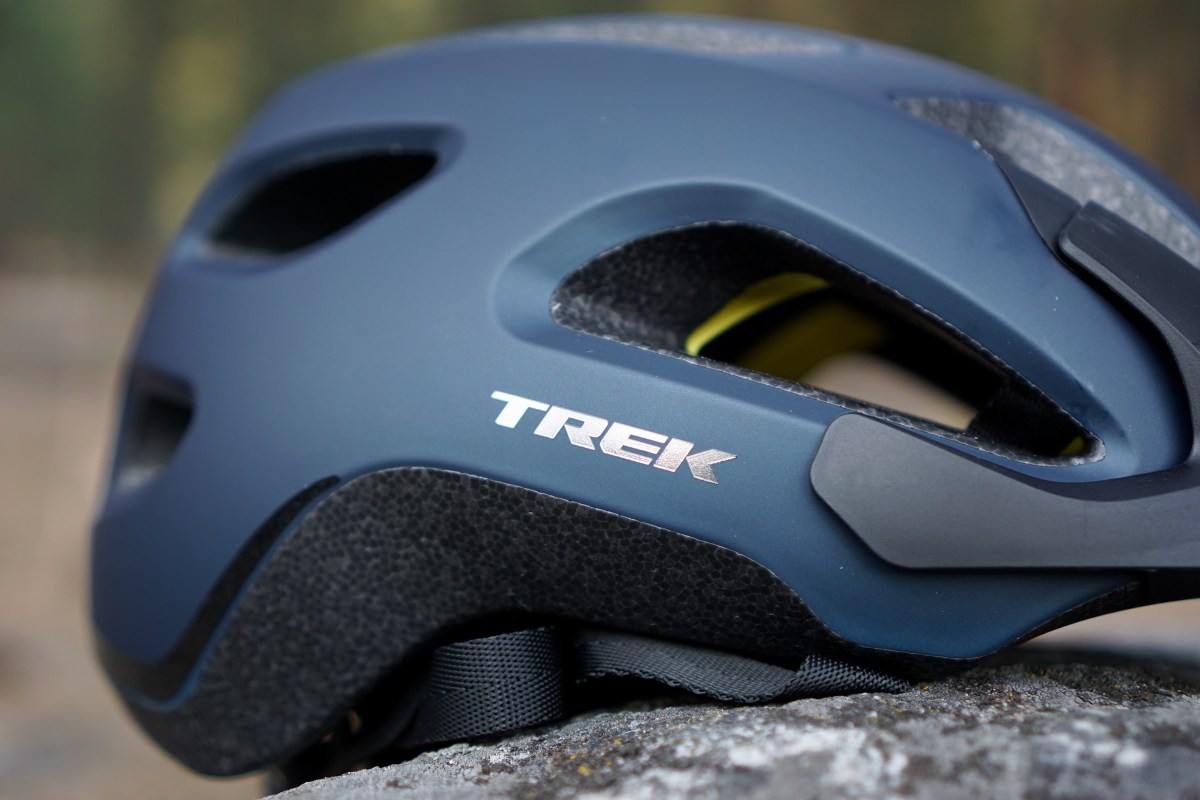
Maintenance and Care
Proper helmet maintenance ensures your valuable investment stays in tip-top condition for as long as possible. For cleaning, use mild soap and water, avoiding harsh cleaners or chemicals that may degrade the helmet’s material over time. And as silly as it might sound, wearing your mountain bike helmet in the shower a few times per year is an easy way to keep it clean. Simply lather up your hair, plop your helmet on your head, wiggle it around, and then rinse everything off.
In terms of storing your mountain bike, opt for a cool and dry area between rides, avoiding car trunks or areas with excessive heat, direct sunlight, or dampness. Regularly inspect your helmet for any signs or damage. If you notice any dents, compressed foam, or frayed straps, you should replace it immediately.
Popular Mountain Bike Helmet Brands
While there are dozens of mountain bike helmet brands available on the market, a handful have risen above the rest. Among the more popular options are Giro, Fox, Bell, POC, Troy Lee Designs, and Smith. Each brand has a unique style and focus; for instance, Troy Lee Designs is known for their loud colors and exotic paint schemes, whereas the Swedish brand POC touts their advanced safety features. Whether you’re in search of a featherweight cross-country lid or the perfect daily driver like the Troy Lee Designs A3, the top-rated brands mentioned above will have something to suit your needs.
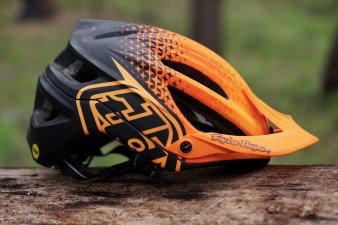

Where Should I Buy a Mountain Bike Helmet?
When it comes to buying a mountain bike helmet, it’s important to choose a reputable seller. We wholeheartedly recommend checking with your local bike shop first. However, if they don’t have the selection you’re looking for, it’s hard to go wrong with one of the multiple online sellers.
Some of our favorite online sellers with great selections include Jenson USA, Competitive Cyclist, Backcountry, REI, and of course Amazon. Additionally, most popular helmet brands like Troy Lee Designs, Fox, POC, and Smith are available for purchase on their respective websites. No matter where you choose to buy your new helmet, it’s important to purchase from a reputable source as to ensure a genuine product.
Frequently Asked Questions (FAQ)
While not necessary, more expensive mountain bike helmets offer premium features like a MIPS safety liner, an adjustable visor, and a travel bag. They may also feature various shell sizes and include extra pads for a customized fit. Consider your needs and budget when deciding on investing in a helmet.
Yes, full-face helmets are a great choice for mountain biking. They offer enhanced protection for the face, jaw, and head during aggressive riding, which can minimize the risk of severe injuries during a crash. They are especially crucial for high-speed descents and technical trails.
Multiple studies conducted by the NCBI (National Center for Biotechnology Information) have shown that MIPS-equipped helmets are effective in reducing the risk of serious brain injury. Furthermore, independent research conducted at Virginia Tech’s helmet lab consistently demonstrates that mountain bike helmets equipped with MIPS achieve higher safety ratings compared to those without.
Investing in a quality mountain bike helmet is crucial for head protection, so it’s not an area to skimp on. Prices for mountain bike helmets range from $30 to $350, but it’s recommended you spend at least $70. Higher-priced options often offer additional benefits such as an adjustable visor and a MIPS safety liner.
The lifespan of a bike helmet depends on various factors, including usage, impact history, and age. Generally, manufacturers recommend replacing a helmet every three to five years, or immediately if it’s been involved in a crash. Regularly inspecting your helmet for signs of wear is important, and if necessary, it should be replaced to ensure optimal safety and protection.
Mountain bike helmets can significantly help reduce the risk of head injury during a crash. They also include a number of sport-specific features and benefits like extra coverage in the rear and around the temple, lots of vents for keeping your head cool, and a visor for blocking the sun or low hanging branches.
XC mountain bike helmets are lighter weight and have much better ventilation than enduro helmets. That said, enduro helmets provide significantly more coverage and are the better choice for more technical or high-speed trails. XC helmets are also known to come without a visor to help save weight.
MIPS (Multi-Direction Impact Protection System) is a technology built into some bike helmets that’s intended to reduce the rotational forces that can occur to the brain during a crash. It consists of a low-friction layer that’s integrated into the liner and allows the helmet to rotate slightly during an impact.





